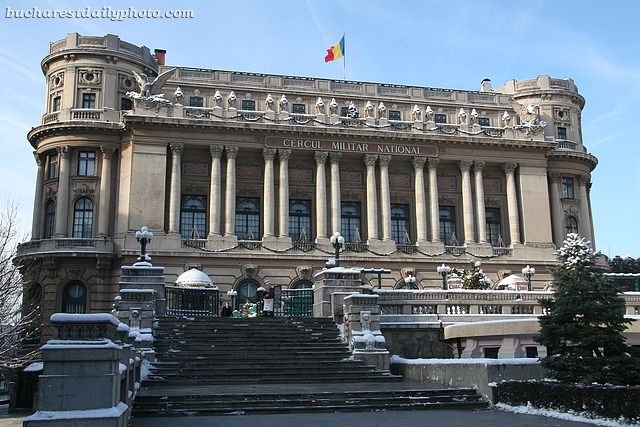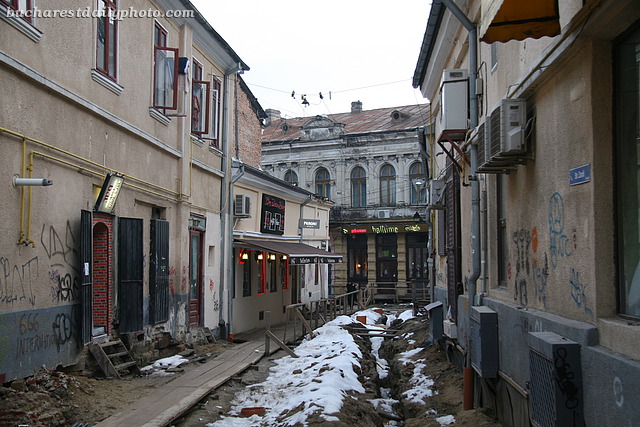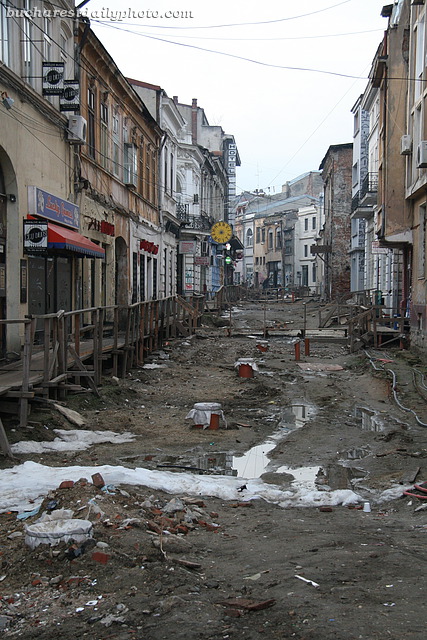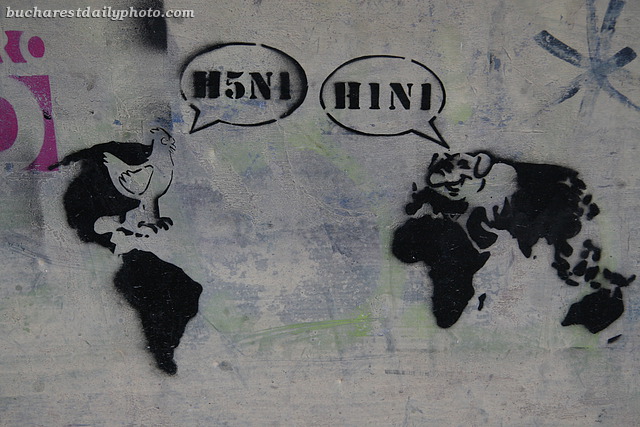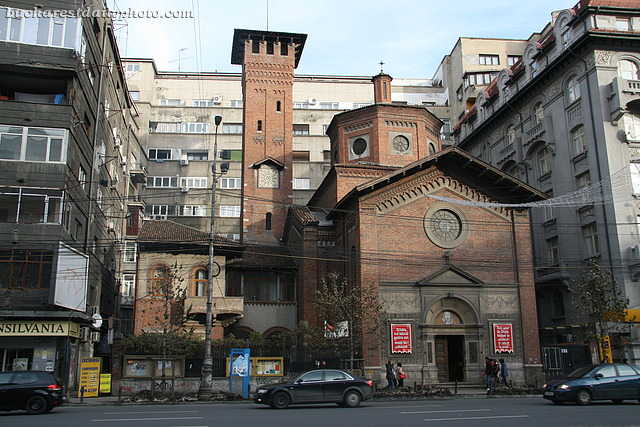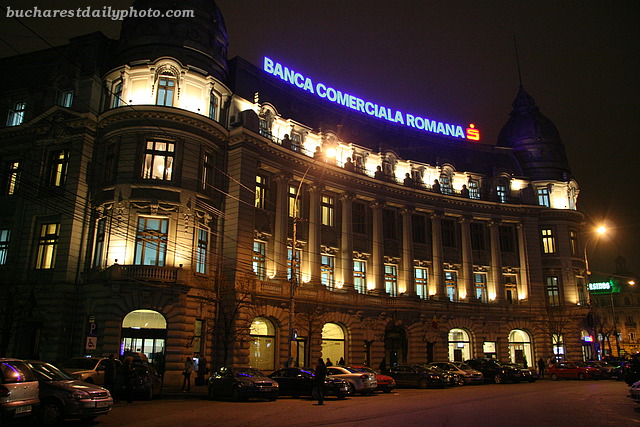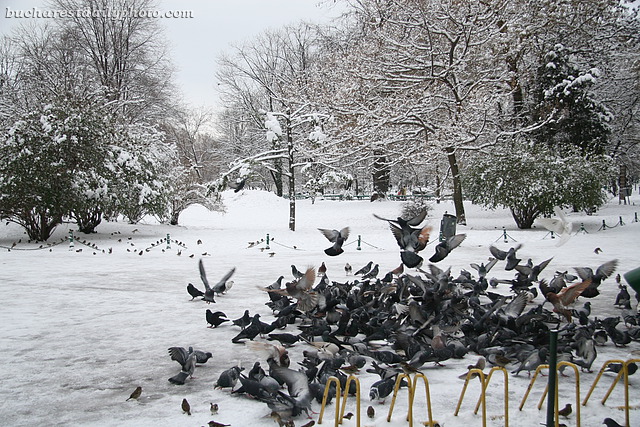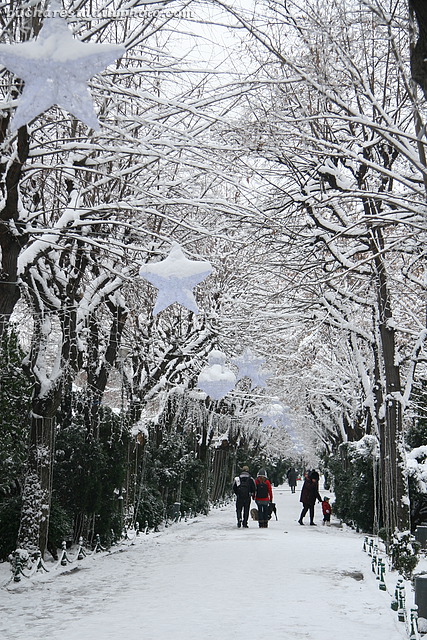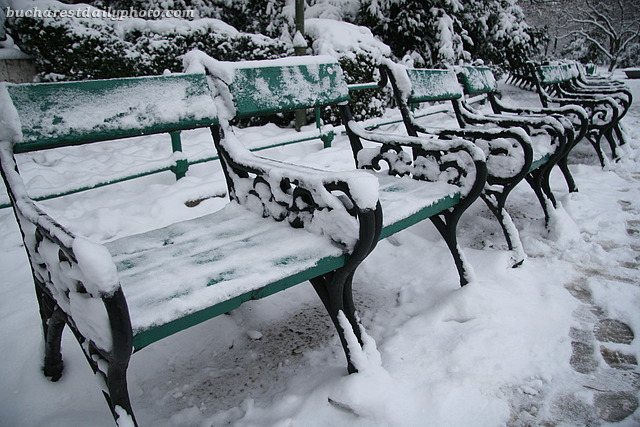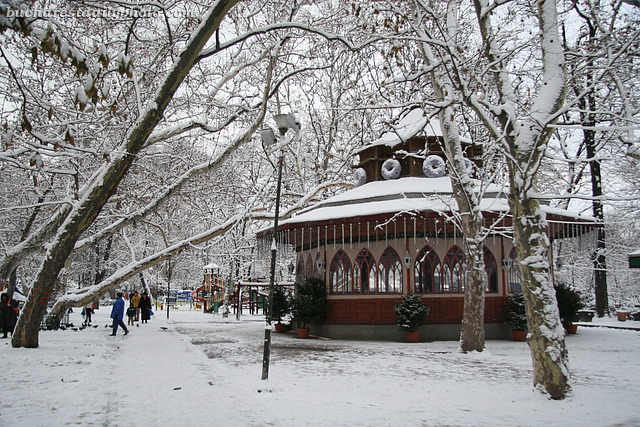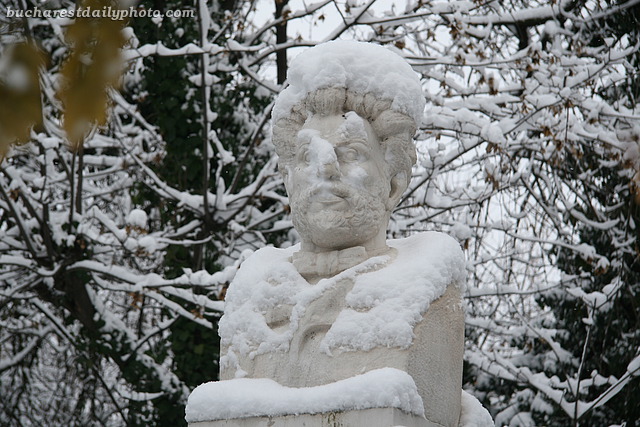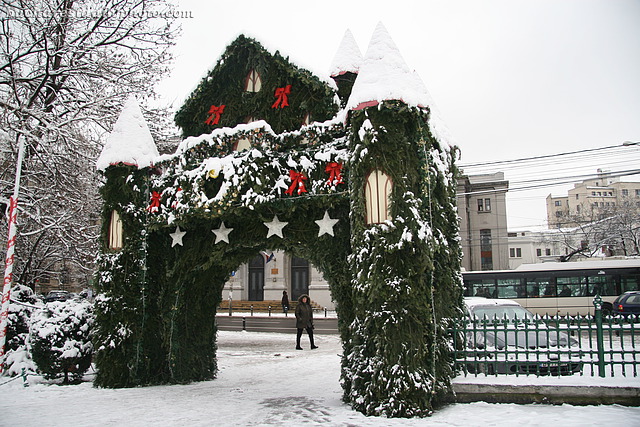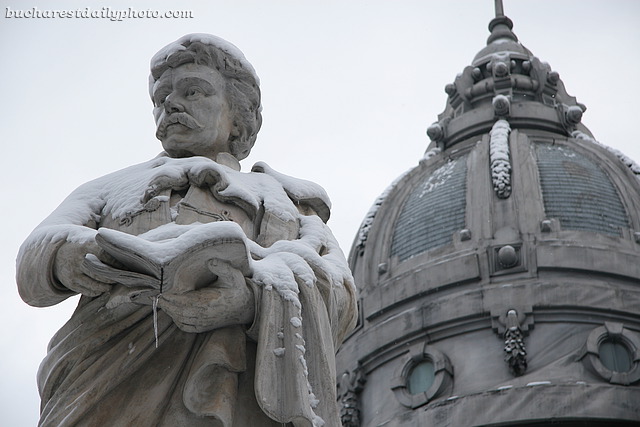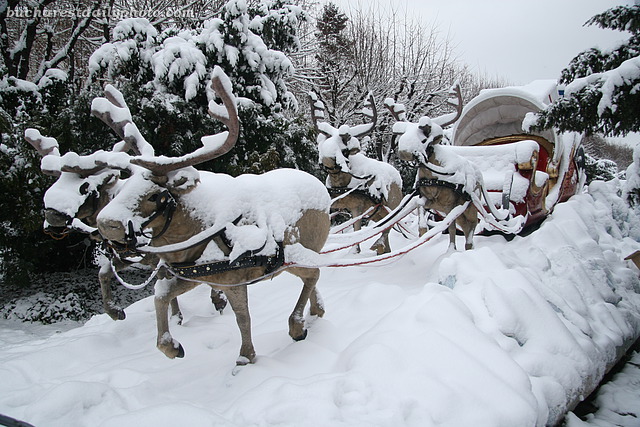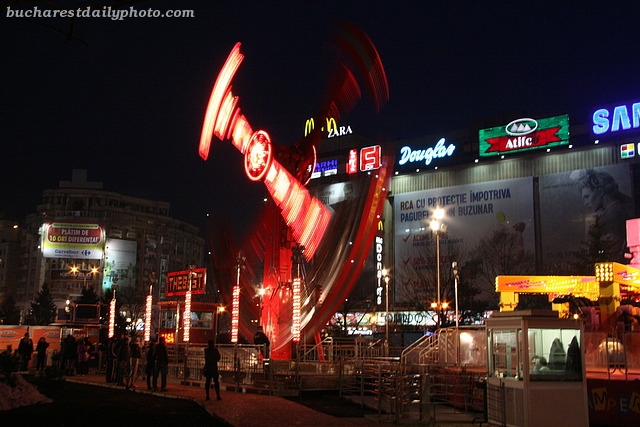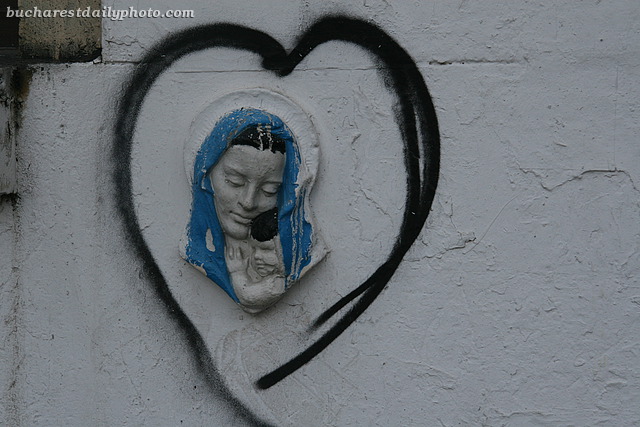It’s time for another example of ornate French architecture. Here’s proof that Bucharest has it own wedding cake! 🙂 The building in today’s photo is the National Military Club (Cercul Militar Naţional in Romanian), designed in French neo-Classical style by Dimitrie Maimarolu, Victor Ştefanescu and Ernest Doneaud. It was designed to be a social, cultural and educational centre for the Romanian Army. Its construction started in 1911 and ended in 1923. Most of the funds were donated by the Romanian Army officers. The building has numerous reception halls and meeting rooms, a theatre, a bookshop, art galleries. The Military Circle was built on the spot left free by the demolishing of Sărindar monastery church, built in 1652. The monastery was damaged in the 1838 earthquake, after which it deteriorated slowly, and was in the end abandoned and demolished in 1907.
Joking bitterly about the flu pandemics of the last few years. I found this stencil in the Old Town, on Nicolae Tonitza Street.
Even if my title didn’t spell it out, I don’t think it would have taken you more than a few seconds to identify this building. The campanile and the Lombard Romanesque style speak for themselves. The Italian Church of the Most Holy Redeemer is a Roman Catholic Church built in 1915-1916 using funds donated by the Vittorio Emanuele III, the Holy See, the Italian Embassy in Bucharest and the Italian community in Romania which in 1915 counted about 7000 people. It is the property of the Italian government and is located on the busiest boulevard in Bucharest, Nicolae Bălcescu. The architects were Mario Stoppa and Giuseppe Furaboschi. The first appointed priest, Antonio Mantica, served here until December 1949 when he was arrested by the communists and forced to live Romania. The newly appointed priest, Clemente Gatti, served until March 1951 when he also was arrested, sentenced to 15 years in prison and later deported. The church was closed until 1968 when it was opened with the occasion of a state visit by the Italian Prime Minister Amintore Fanfani. Following the visit, the church remained open, but only a few services a year were performed, on special occasions like Easter, Christmas, the Assumption of Mary etc. Finally, the Italian Church was reopened in 1989 after the Romanian Revolution. Services are held daily in Romanian, and on Sundays in Romanian, Italian and Polish. The parish house was added in 1924 and for a while served as the Italian school. The campanile is 27.75 meters tall and carries 4 large bells. The surrounding tall buildings were raised in the 1930’s altering the space around the church.
I like shooting night time pictures of Bucharest. I guess that’s because, like many big cities, Bucharest feels like a different place at night, a calmer, not as chaotic and demanding place as during the day. This is why you’ve already seen many night shots on my blog and there are more to come.
Remember the dome featured in the “white blankets” photo from two days ago? It belongs to the building in today’s photo, the classical and elegant headquarters of the Romanian Commercial Bank, built in 1906 by architect Oscar Maugsch for the Generala Insurance Company.
And finally I present to you the last photos in the snow series, all taken two days ago in my favourite park, Cişmigiu. Looks like the subzero cold wasn’t enough to keep people from coming to the park. Lots of folks were out and about strolling the alleys; it’s true that nobody was sitting on the benches for a chat 🙂 I’ve met quite a few fellows with their cameras and even compared photo equipment with a couple (they had a Nikon while I’m part of the Canon team). As you can see in the above photo, someone was feeding the pigeons just as I entered the park. Here comes the rest:
Taking a stroll
Statue of Ion Creangă, Romanian writer
With the arrival of the new snow, all the statues in the city have received white blankets to protect themselves from the cold. Such is the case of the statue in today’s photo, one of the four statues located in University Square, representing Gheorghe Lazăr (June 5, 1779 – September 17, 1821) a Transylvanian-born Romanian scholar who founded the first Romanian language school in Bucharest in 1818. The statue was executed in 1886 by the sculptor Ion Georgescu.
And Santa has left the building (or in this case the sleigh).
The attraction park that was temporarily installed in the Union Square Park gave me the opportunity to try shooting an “implying motion” photo, by using a slow shutter speed to shoot a moving object. The effect I was going for was a moving object that will appear blurred while the stationary objects around it will be recorded in sharp details. I tried this technique on a number of rides. The merry go round didn’t come out too well but the ride in today’s photo came out a little better. This was the best I could get without a tripod as I didn’t have one with me.
Today’s shot shows a representation of Virgin Mary and Baby Jesus on the wall of the University of Architecture, among different plaques in the memory of the revolutionaries and various stencil graffiti. Someone, maybe the author, drew a heart that surrounds the representation.
